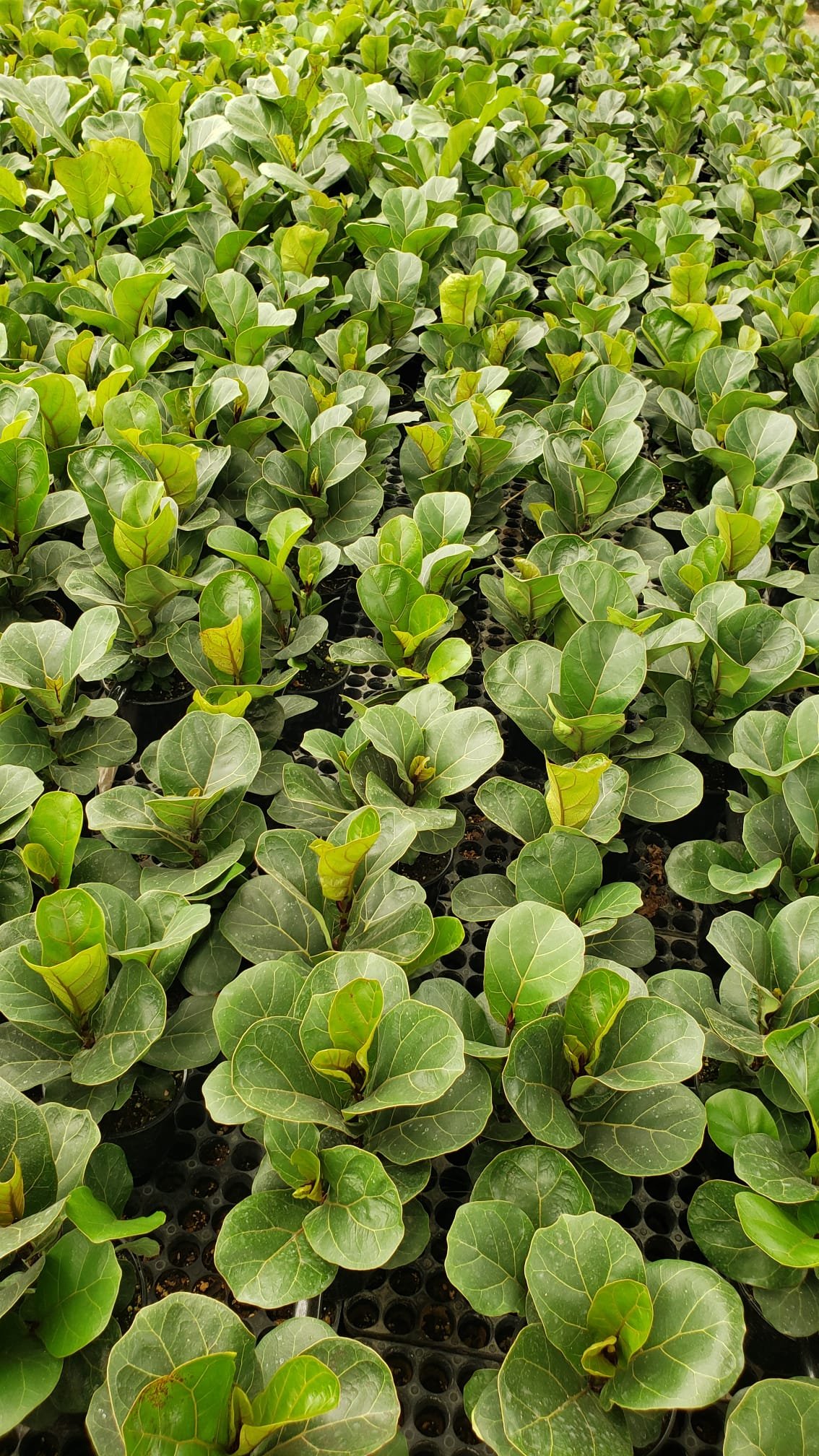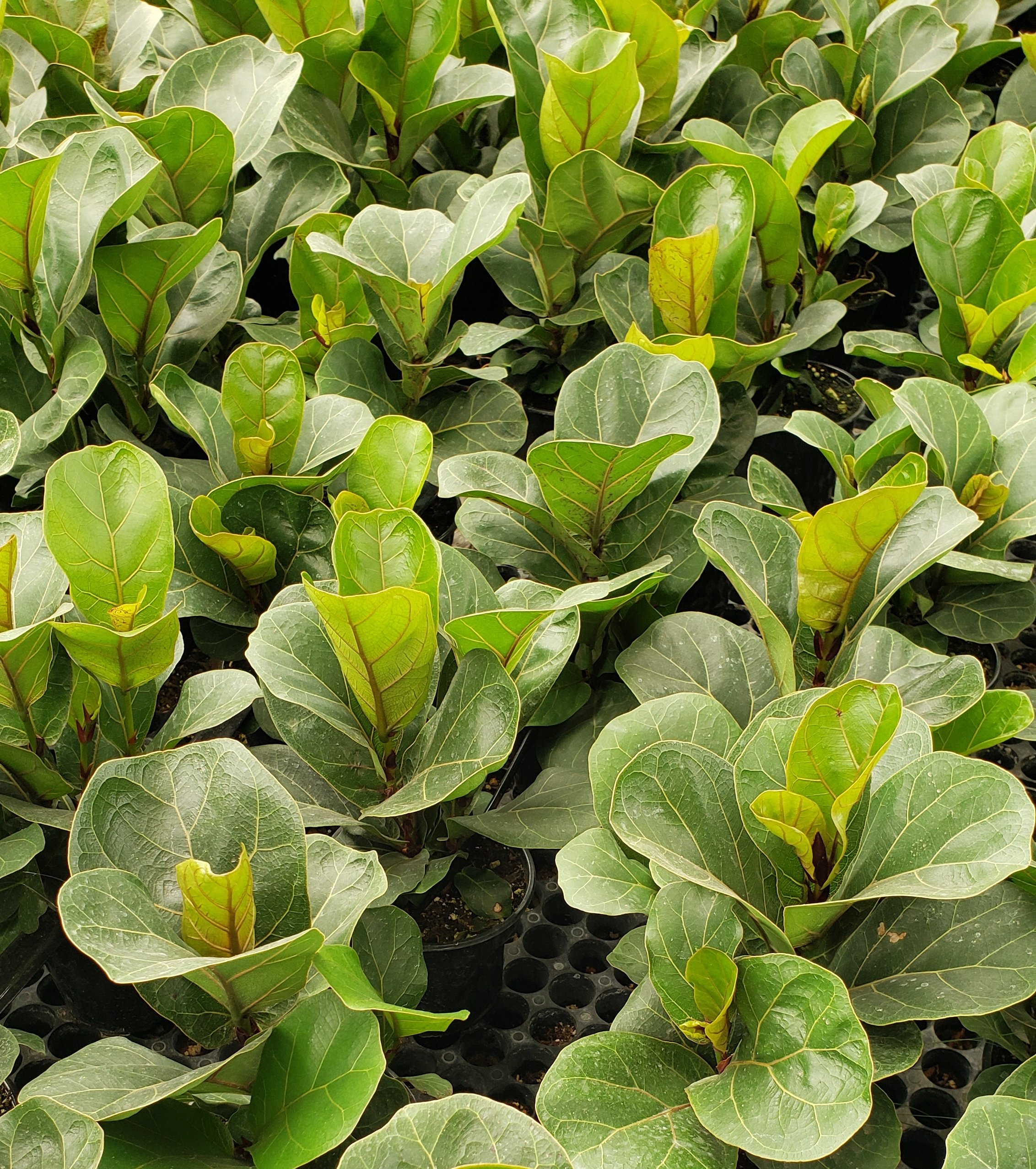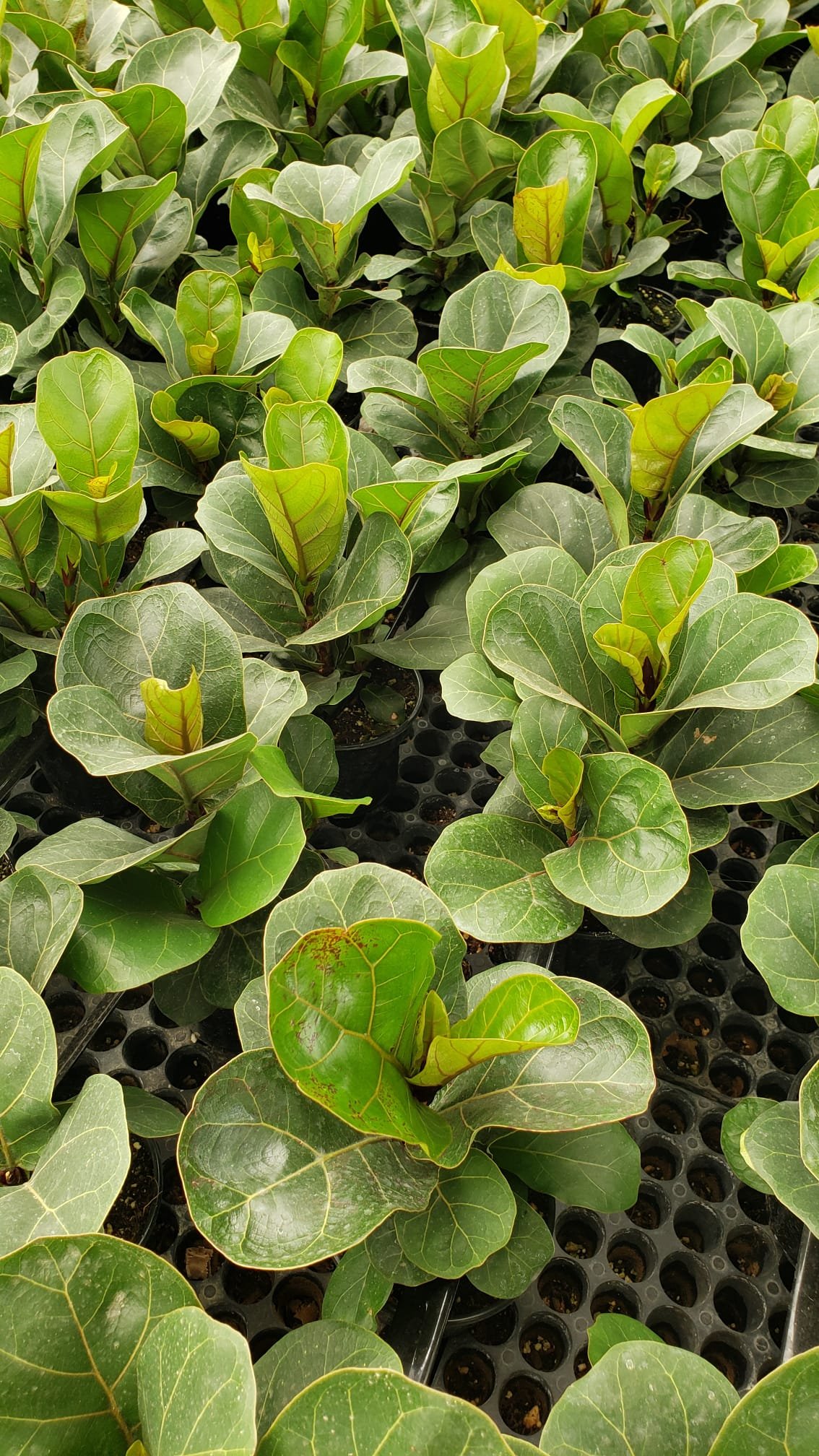Fiddle Leaf Fig
The Plant of
Stunning Boldness
Having become the supermodel of green plants, fiddle leaf figs are posing in every interior design magazine published, splashing the chicest instagram homes, and a top choice among many interior designers. Whats not to love… it’s lush, it’s bold, its leaves are vibrant, green, and violin shaped happiness. Despite its popularity, it's certainly not the easiest houseplant to look after, but its visual impact in a space is unmatched when given proper conditions and care.
Fiddle Leaf Fig
Care Line Classification
Care Information
Light
Place in bright, indirect sunlight.
Temperature
Moderate indoor temperatures are preferred. Avoid drafts.
Water
Water when the top 50% of the soil becomes dry, then water thoroughly. Do not allow to sit in water. Mist occasionally to increase humidity, especially in the drier winter months.

The Fiddle Leaf Fig: Deep Dive
Season
Year round indoors
Care
The Fiddle Leaf Fig appreciates a warm, humid environment, a fair amount of water and plenty of light. Choose a location away from air vents and drafts where the tree will receive plenty of bright ambient light. Because their leaves are so large, they require a lot of sunlight. Place directly in front of, or close by a southern or western facing window. Eastern exposure can also work, as long as the plant is directly in the window and the space feels very bright. A few hours of direct sun is also beneficial. If placed in a full-sun location (where the plant will receive over 6 hours of direct light daily), a humid environment will keep your Fiddle Leaf looking its best. We do not recommend this plant for windows with northern exposure. They will not thrive in low-light locations. If you are unsure about your lighting conditions, it is best to place the plant directly in front of the window for the safest bet. Rotate your plant once a month to keep it straight and tall, as it will naturally grow towards the sun.
The Fiddle Leaf Fig likes its soil to be kept consistently moist with a brief drying out period between waterings, as it comes from an area of the world that gets very dry between rain storms. Water it thoroughly whenever the top 2” of soil has dried. Allowing the soil to dry deep within the lower root system will lead to leaf loss, so be sure to check in with the soil regularly until you develop a routine with your plant. In contrast, too much moisture in the soil can lead to root rot and also cause leaves to drop. Lastly, if you are using a container made from organic materials to pot your Fiddle Leaf in, we highly recommend using a waterproof saucer underneath to protect your floors, as humidity may accumulate beneath the pot due to the volume of water this plant requires.
Home to Garden
Can the fiddle leaf fig live outdoors? Yes, it most definitely can, but it needs to be in the right climate. The hardiness zones usually recommended are zones 10 through 12—the very southernmost of the continental United States and Hawaii. Needless to say, this excludes much of the country. But during warmer seasons, no matter your hardiness zone, you can give your fiddle leaf a little bit of outdoor time as long as it stays above 50°F, but also isn’t scorching hot. If you decide to plant your fiddle leaf fig outside, just be aware that it can get tall—we’re talking 50 feet tall— so plan your space accordingly.
Flower Meaning
Ferns have different meanings in folklore. In Slavic tradition, anyone who sees a rare fern flower will receive happiness and riches for life. Finnish folklore says anyone who holds a fern’s seed on Midsummer night will be able to move about invisibly to seek hidden treasure. In the US, ferns are said to contain magical properties, warding off evil spirits if thrown into burning coals.
Fun Facts
During the Victorian era, fern collecting grew so popular that there was a name for it. Pteridomania was the act of gathering ferns or using them in decorative art, like pottery or textiles. In addition to their beauty, ferns are great at purifying the air in your home. They remove pollutants like formaldehyde and xylene, helping you breathe easier and get better sleep. The air purifying properties of ferns are even thought to aid with headache relief.






